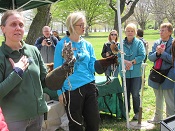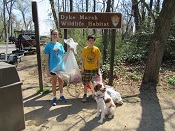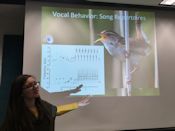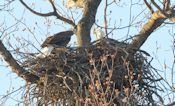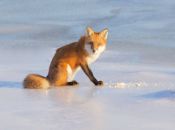Around 250 raptor fans admired beautiful birds of prey at FODM’s annual Raptor Rapture on April 21, 2018, a beautiful, sunny day in Belle Haven Park. Raptor Conservancy of Virginia experts brought an Eastern screech owl (Megascops asio), a red-tailed hawk (Buteo jamaicensis), a red-shouldered hawk (Buteo lineatus), an American kestrel (Falco sparverius) and a merlin (Falco columbarius), all “rescue birds.”
With clear blue skies, a bright sun and a gentle breeze, 80 eager volunteers cleaned up trash along the Dyke Marsh and Belle Haven Park shoreline on April 14, 2018, for three hours at low tide. Many youngsters got school service credit. Everyone got exercise and a great feeling of accomplishment as the bags piled up.
“Marsh wrens are special, very charming birds,” Dr. Sarah Luttrell told the Friends of Dyke Marsh on February 25, 2018. Her presentation focused on how comparing multiple traits, including plumage color, size, shape, vocal behavior and genetics, reveals a pattern of evolution. “Genetic variations are very high within a marsh,” she said.
As of early February 2018, three bald eagle pairs have active nests in the Dyke Marsh Wildlife Preserve. Observers have seen eagles taking sticks to nests, pairs perched, females incubating eggs and a male taking prey to a female on the nest.
Bald eagles lay two to three eggs in late winter and females incubate the eggs for five to six weeks. Between May and July, chicks fledge at 10 to 12 weeks of age. Nest construction, breeding, nesting and eaglet hatching do not always succeed.
The January 2018 cold snap and days of subfreezing temperatures brought out winter’s beauty in Dyke Marsh. Particularly stunning against the icy white background was a red fox (Vulpes Vulpes), photographed by Ed Eder on January 2 off the boardwalk. The fox was prying a piece of dead fish embedded in the ice as another fox called. Eventually, the vocalizing fox joined the foraging fox.

